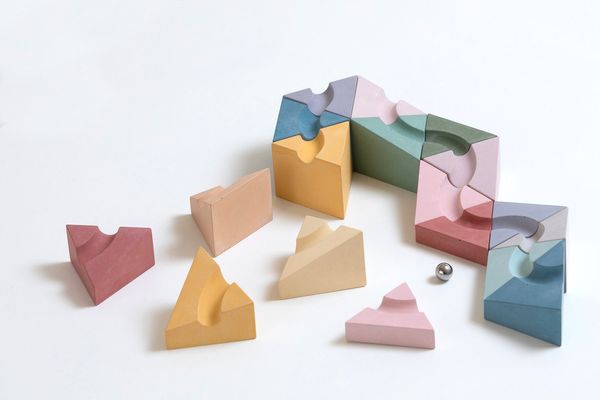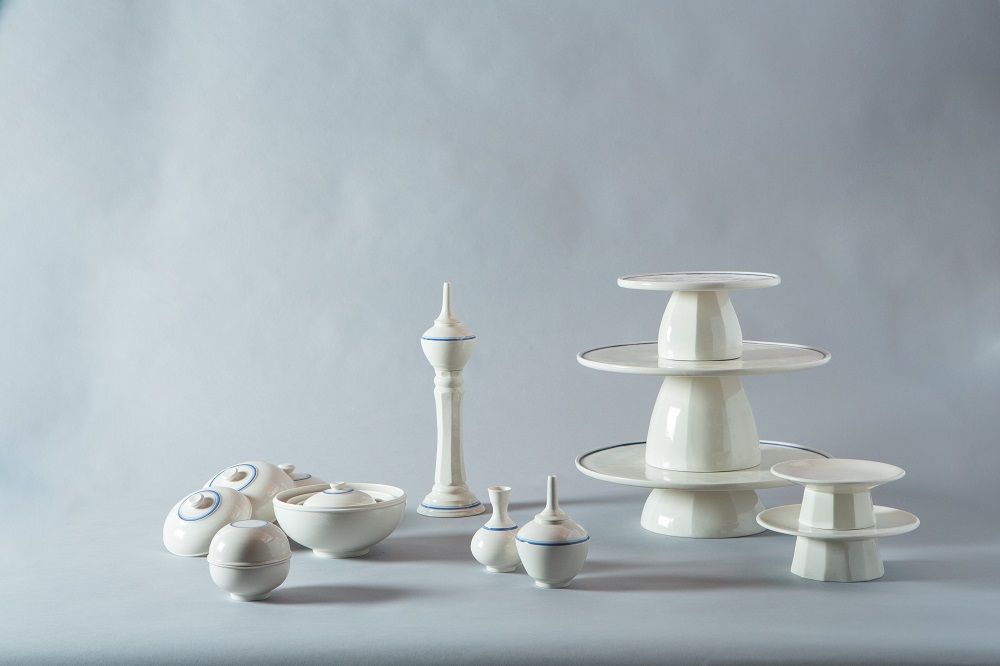Recently, we can hear and read about South Korea the most in relation to the sweeping success of the movie Parasite at the Oscar gala, but it is also worth getting to know more fields of Korean art and transmission of culture, for example through the exhibitions of the Korean Cultural Center that has moved into a new home, which can be seen until the end of the month.
Written by Piroska Novák
Generosity – this word, this attribute pops up in my mind every time I think about the Korean Cultural Center in Budapest, its exhibitions and the Korean culture, itself, too. The largest Korean Cultural Center of the Central-European region opened its doors in 2012 in Budapest, in Csörsz utca. The institution belonging under the embassy of the Republic of Korea in Budapest has offered countless interesting and free programs, exhibitions, film clubs, concerts, language courses, traditional dance, painting, calligraphy and cooking classes since its opening – the latter were usually fully-booked within minutes. The popularity of Korean culture today can be traced back to several causes, one of them being the success of the historic costume films and television series categorized into the genre of popular culture (dorama), which proved to be a perfect means for transmitting culture. The reason for this is that they not only bring the Korean history closer to the audience, but through the use of traditional costumes and sets, viewers can also get an insight into Korean object culture, way of life and customs, which all urge the audience to get to know this nation even more.
The Korean Cultural Center in Budapest moved into a new headquarters last fall, encompassing a total of eight floors with much bigger floor space than the previous one, under Frankel Leó út 30-34. In November 2019, they celebrated the moving, the reopening, as well as the 30-year diplomatic relationship between South Korea and Hungary with two monumental travelling exhibitions. The central exhibition titled The Cosmopolite face of contemporary Korean architecture 1989-2019 presents the past three decades of South Korean architecture, through thirty selected examples. The architectural projects of great importance are displayed by being embedded into historic, political, social or economic context in the special exhibition installation. Octogon Architecture & Design Magazine published a detailed recommendation about the exhibition, also accompanied by a conference and several guided tours.
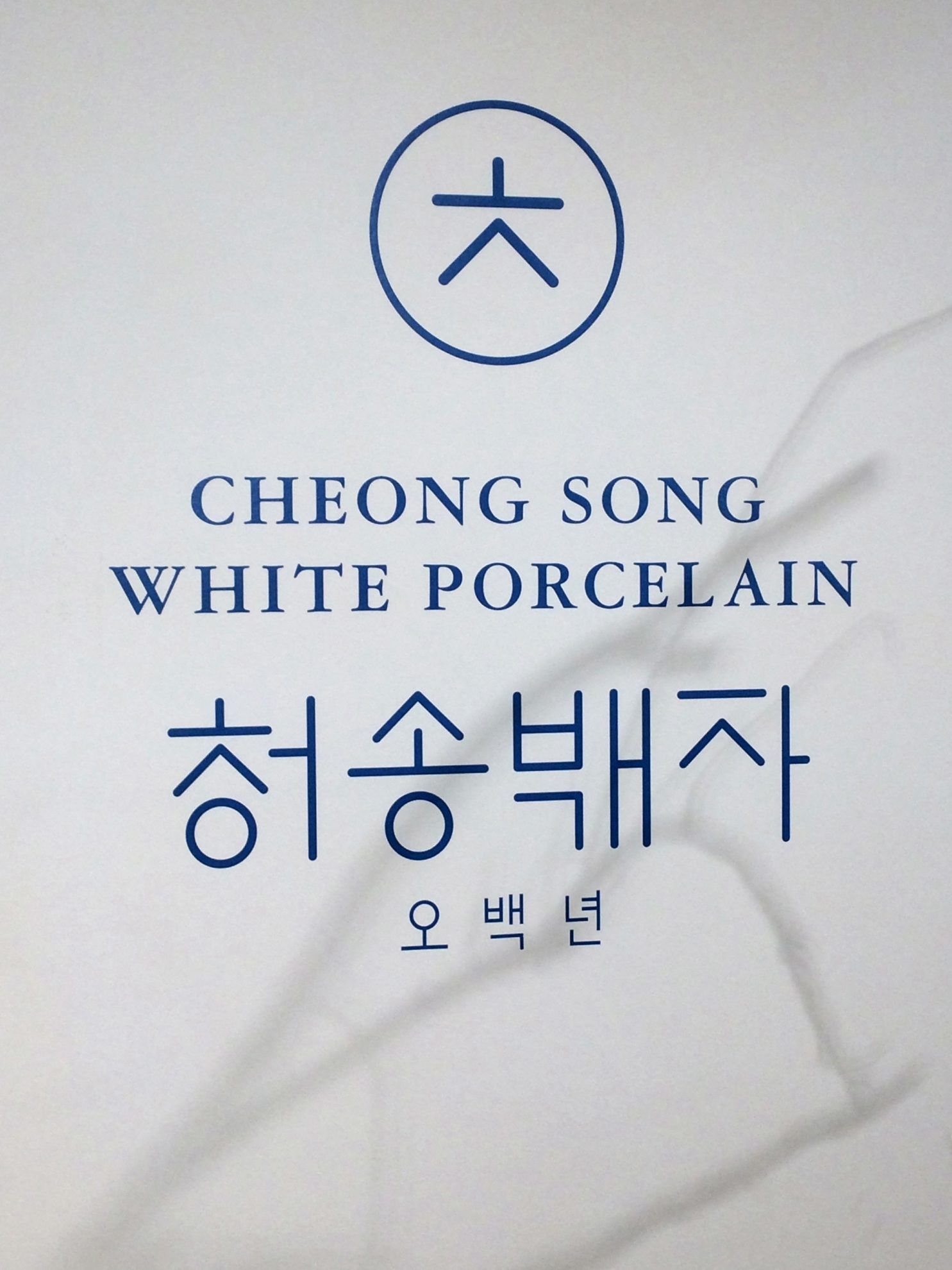
The other exhibition received much less attention, although gastronomy and object culture which are closely related to the same (almost always) create strong and elementary points of connection between the culture of the two countries. The chamber exhibition titled Korean kitchen: second round, together with nature introduces the traditional porcelain-making in Cheongsong and the cult of porcelain dishes to visitors. In the pop-up exhibition space on the first floor of the Korean Cultural Center, you can see traditional serving pots linked to Korean dining traditions and such modern adaptations that are already adjusted to European customs. The use of the white porcelain from Cheongsong serving as the base material for the objects (baekja) was popular in Korea from the end of the 15th century until the 19th century, during the era of the Joseon dynasty. The mass prepared from the powdered porcelain stone extracted with opencast mining in Cheongsong in the south-eastern part of the country burnt at 1250-1300°C becomes a fine, dense and massive material of ivory color, which is resistant to scratches and superficial injuries arising from use. The forms of the Cheongsong porcelain pieces are simple, they are moderately decorated, typically with a faint line painted under the glaze with cobalt-oxide, highlighting the edge of the brim. The explanation of the moderated cobalt paint different from the well-known blue-white China also includes the historical fact that there is not much cobalt ore in Korea, and, therefore, its use was quite expensive. The whiteness of the porcelain, the puritan forms serving practical functions of use and the moderate decoration can be traced back to the teachings of Confucianism, as they saw the expression of plain thoughts in the use of objects made out of porcelain. At the same time, it should be noted that the objects made out of porcelain from Cheongsong were expensive luxury items back in the day, and they tend to appear on the tables of the wealthy layers of society even today.
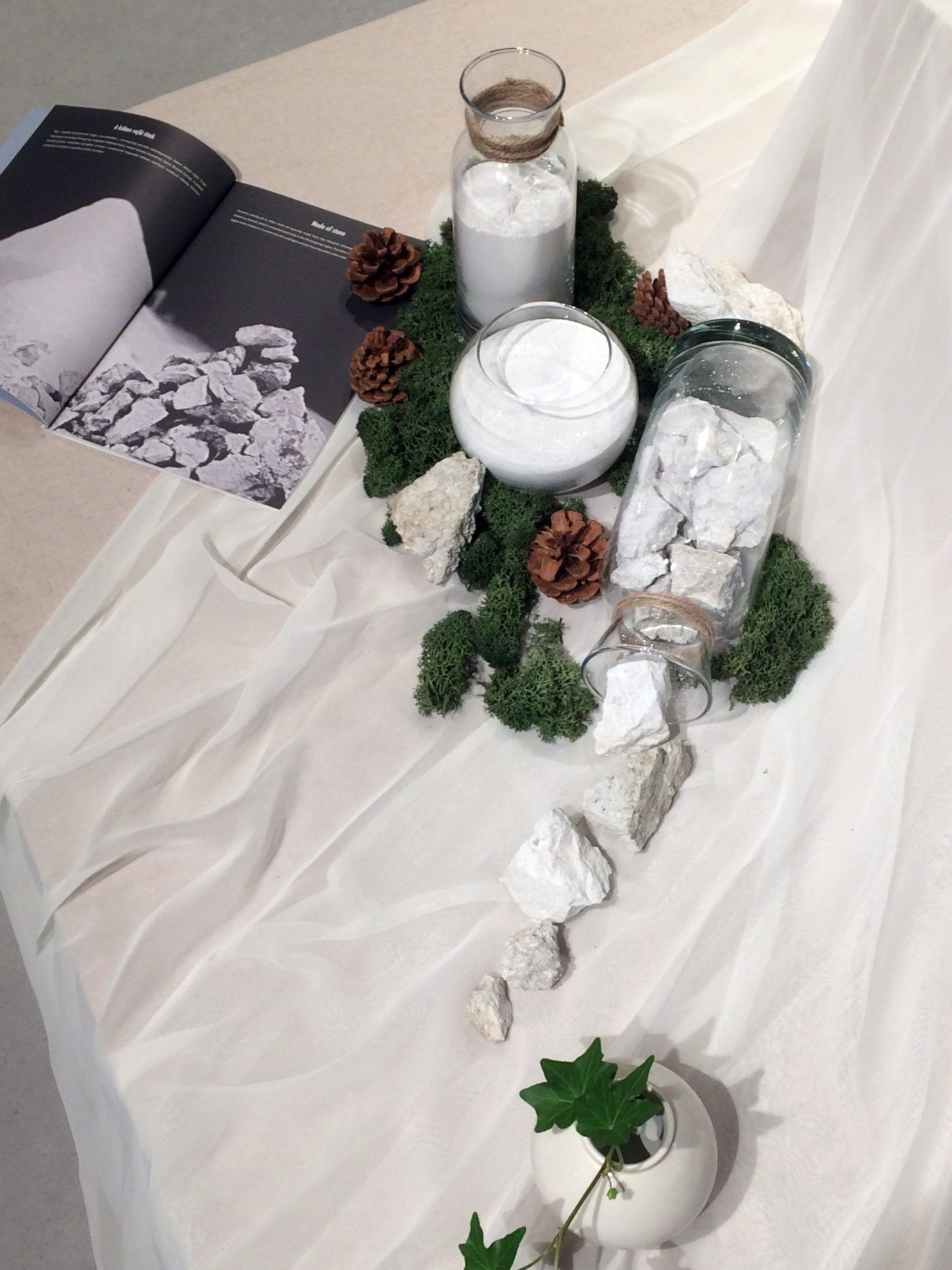

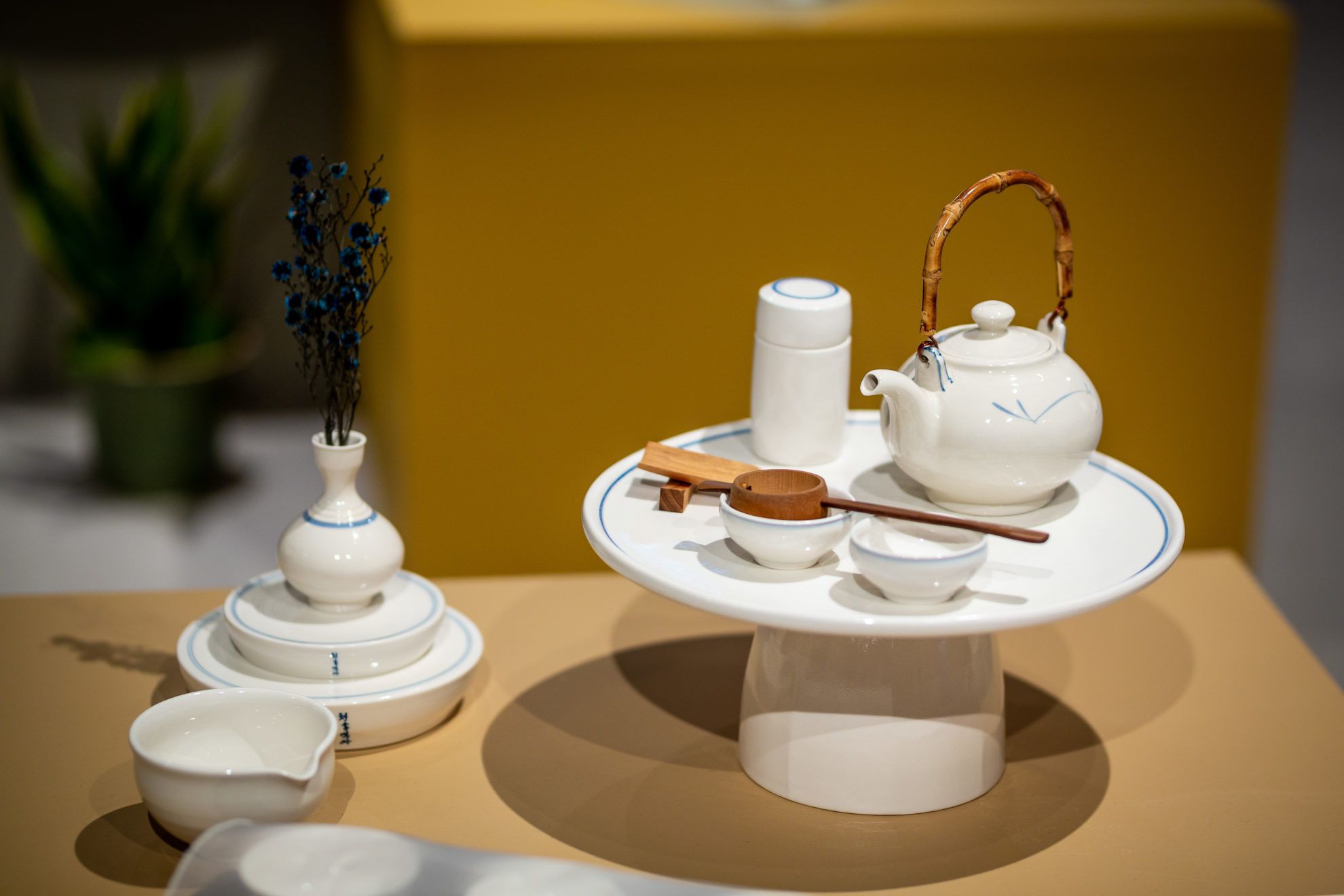
The Far-Eastern porcelain exported to Europe from the 15th century on were called “white gold”, and their value was measured in the price of gold. They were regarded a status symbol, and in the beginnings, only high-ranking rulers and the members of the aristocracy could afford to possess them. The objects made of porcelain were regarded very valuable in Korea, too; the following saying (cited frequently even today) illustrates the difference between the two cultures well: “Cheongsong white porcelain is thought to sweeten the rice and water served in it.”
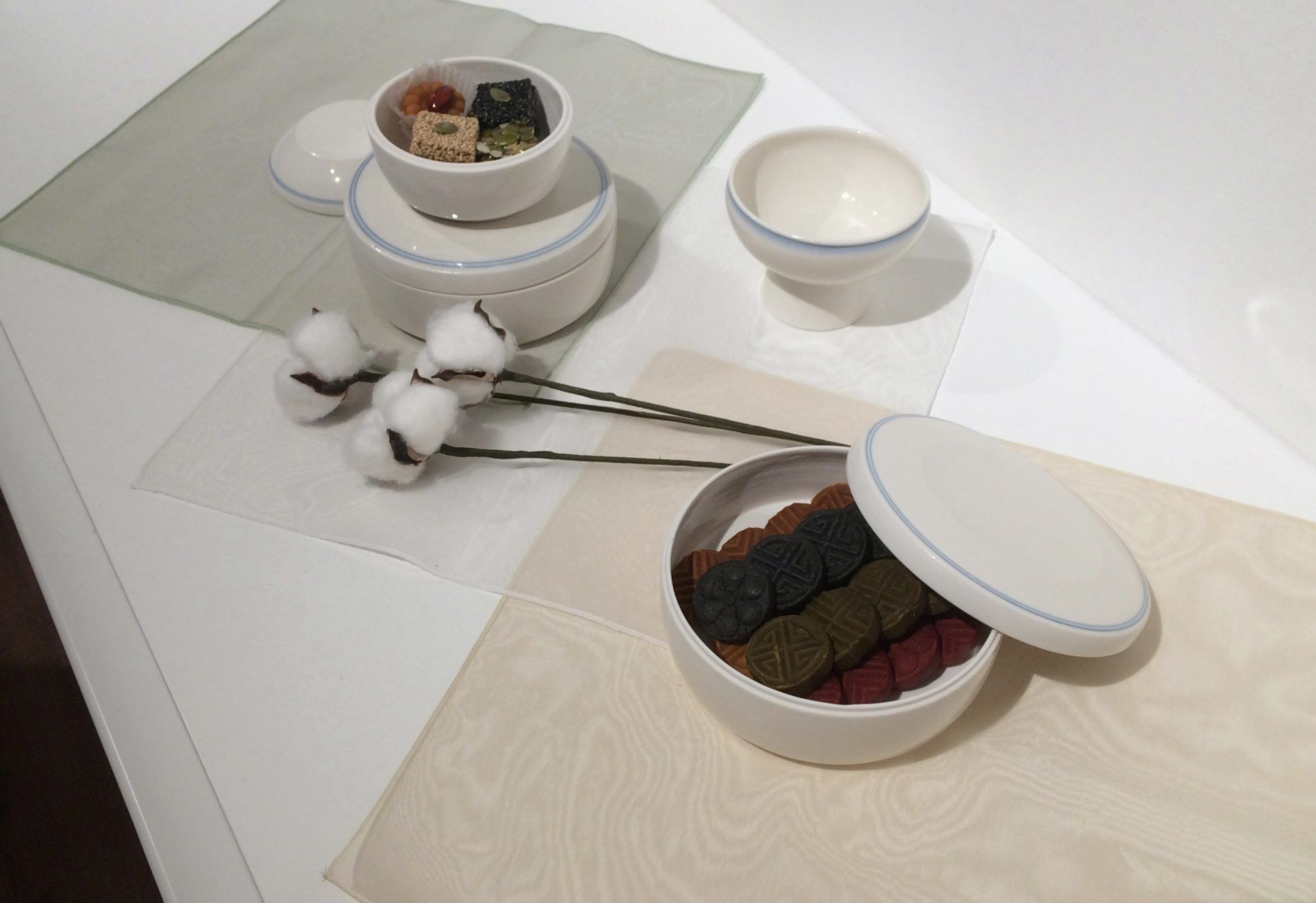
The subtitle of the exhibition does not only allude to the fact that in Korea, seasonal eating in harmony with nature, healthy eating, and the principle of food as medicine for the body is closely related to the pot culture of cooking and serving, but also to that in fall 2018, in the previous headquarters, a separate exhibition was dedicated to the justly famous Korean fermented food, and the earthenware from Ongg carrying out the aging and preservation processes. The exhibition titled Korean kitchen: the history of fermented food presented the preparation phases of one of Korea’s national dishes, the kimchi, in the “breathing pots”.
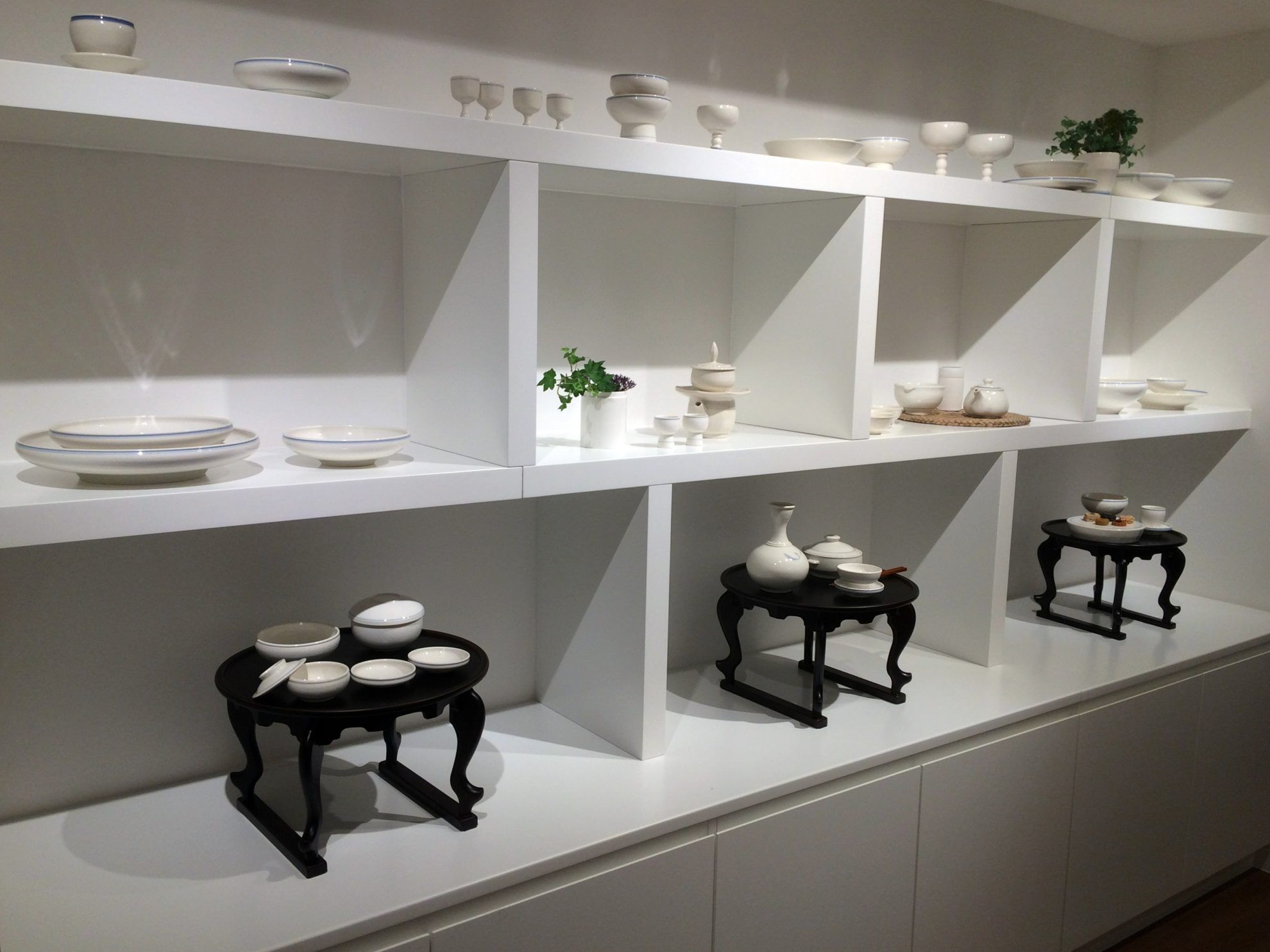
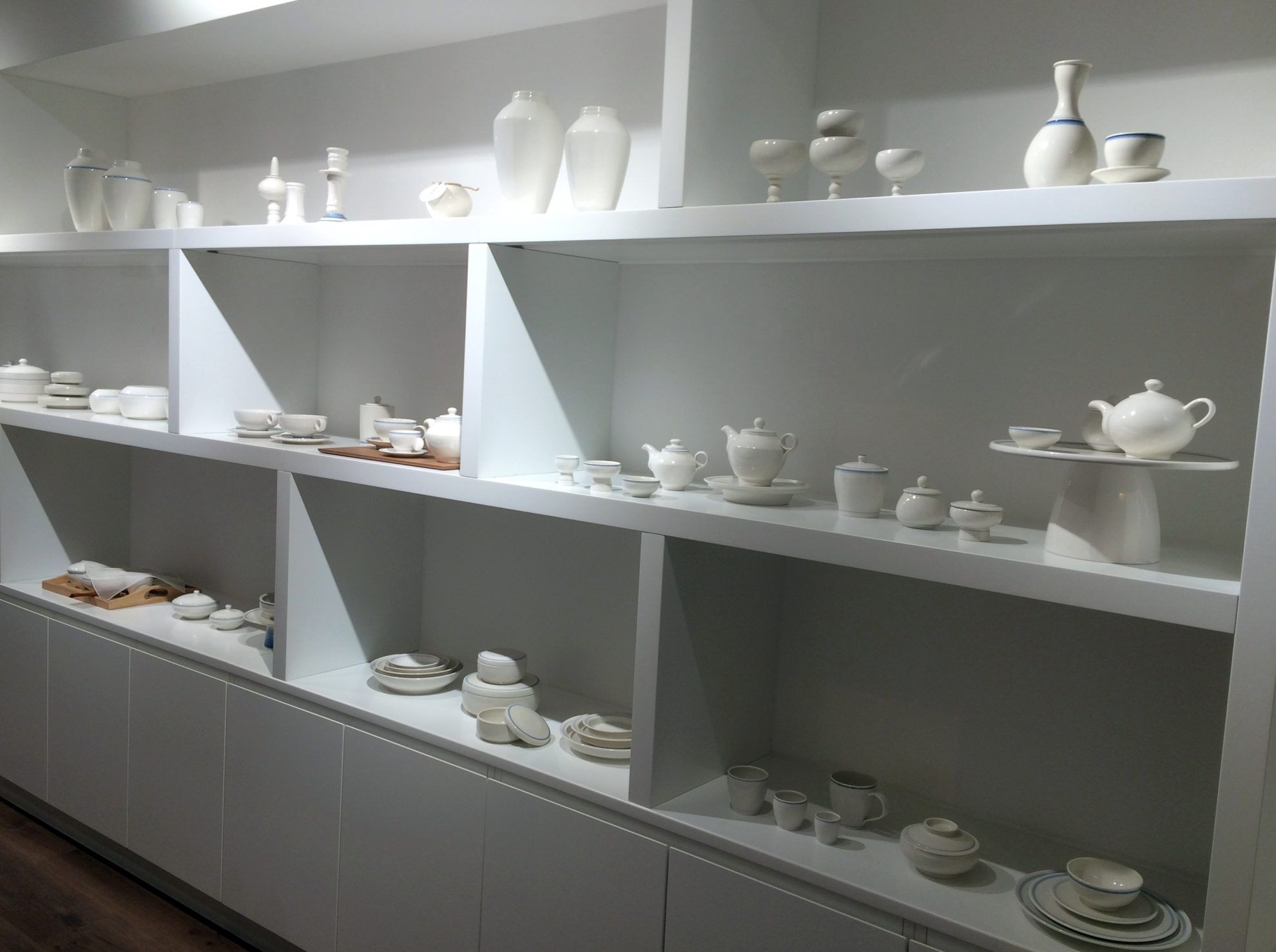
In Cheongsong, the practice of producing white porcelain declined significantly in the 20th century, and it ceased to exist with the closing down of the workshop of the last potter, Ko Man-kyeong, in 1958. The fully handcrafted traditions of Cheongsong porcelain-making were rehabilitated in the beginning of the 2000 under the aegis of the Cheongsong Culture & Tourism Foundation representing cultural heritage protection. In 2009, the traditional pottery center built around the former workshop of Ko Man-kyeong was created, where the former porcelain mine and the traditional high temperature wood-burning oven were also opened. At the revived place encapsulating 500 years of tradition, contemporary ceramists create their pieces by following the old tried-and-true workflow by using the potter’s wheel solely. The traditional and the modern Cheongsong porcelain pots inspired from traditions showcased at the exhibition of the Korean Cultural Center were also made in the Cheongsong Baekja Heritage Center. Here, the co-existence of tradition and innovation is not just any empty phrase, which is further proven by the fact that the stocks of the Cheongsong ceramists won the Living Design Award in Soul last April. To what extent should this approach, such respect towards values be followed in relation to the Hollóházi Porcelain Factory that has become available for sale again recently? – an unpleasant question we could ask ourselves.
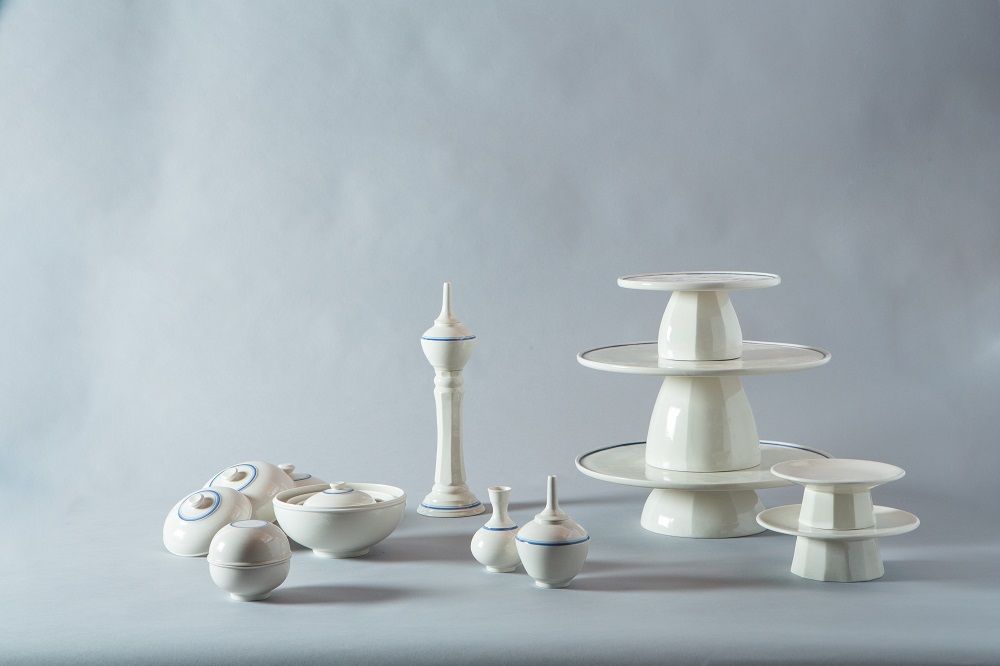

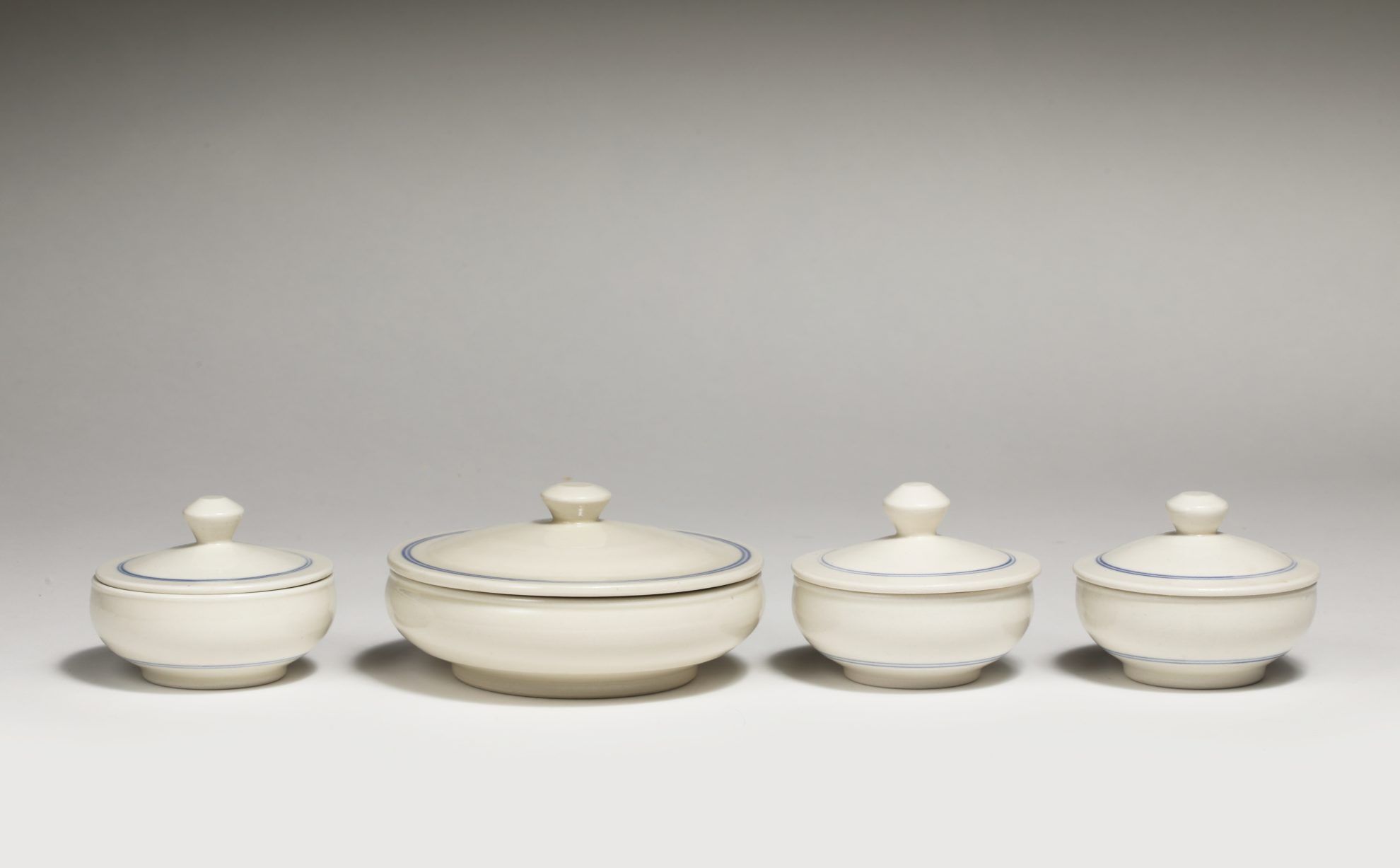

The emblematic piece of the exhibition is a porcelain pot shaped in the form of a sphere, the asymmetric body of which is covered by fine snow-white, slightly glistening, matt-finish porcelain glaze. The piece depicting the full moon (Moon Jar) manifests the essence of Korean pottery art and culture and encompasses the history of handcraft, and the complete and perfect beauty of imperfection. It is no coincidence that it is displayed amongst the serving pots alone, in itself, and the silhouette of this object can be seen on the cover of the exhibition and the catalogue accompanying it, too.
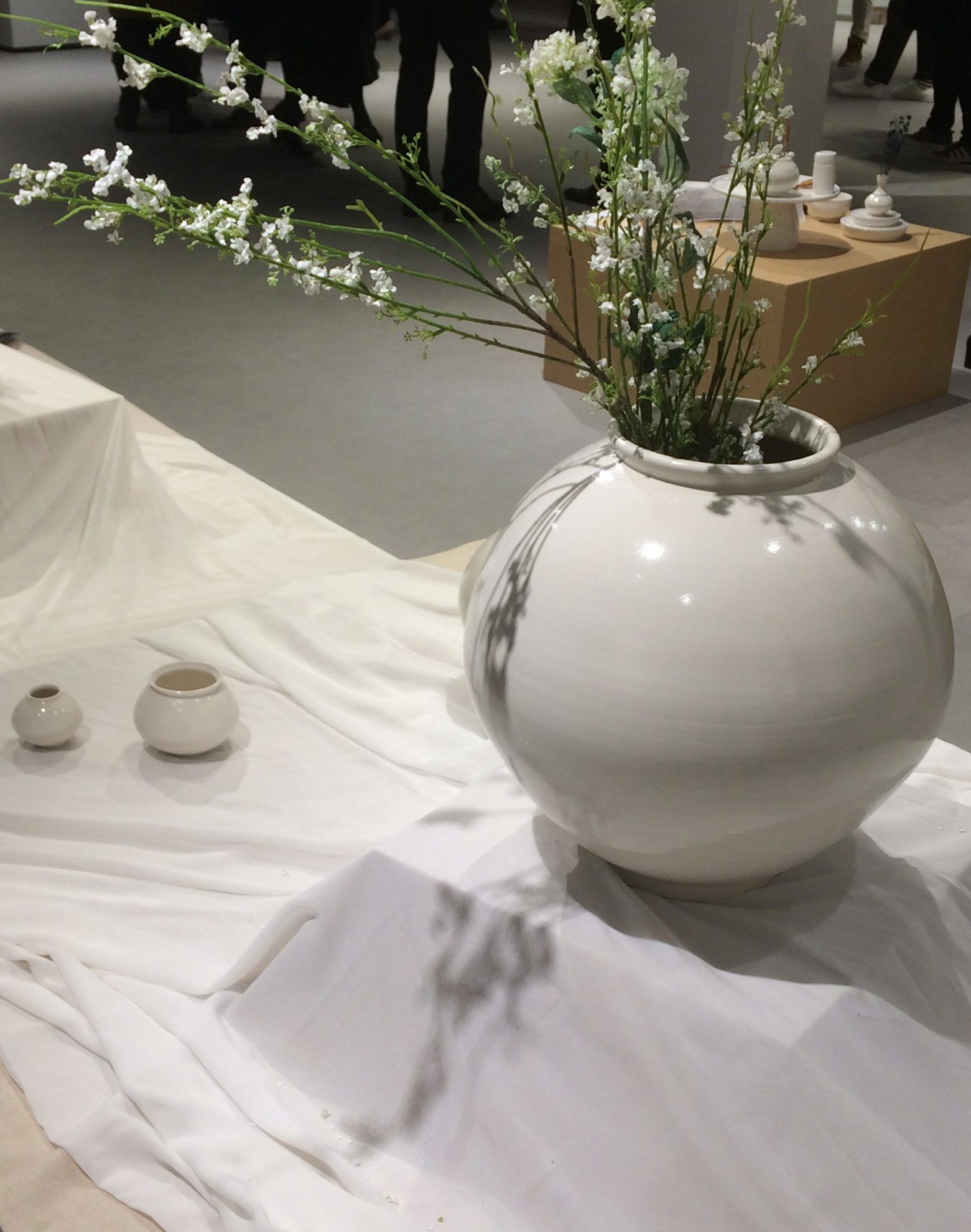
Generosity is a well-chosen attribute also in relation to the exhibitions presented. At the same time, comparing the practice of Korean support and transmission of culture with the situation in Hungary, generosity also becomes a desired goal that should be achieved. The Korean Cultural Centers established in the metropolises across the world present the positive practice that can be experienced in South Korea authentically. The permanent exhibitions of the national museums of the country are always open to visitors free of charge, and the prices of tickets for the temporary exhibitions, royal palaces and religious heritage sights are affordable. In Korea, the goal is not to rip off and rob tourists, but to transmit culture, to give experiences and to offer hospitality.
For the occasion of the reopening of the Korean Cultural Center in Budapest, the Ethnographical Museum in Seoul sent collapsible pop-up exhibition elements aimed at introducing the Korean language (hangul) and clothes as gifts, which are titled the “The casket of Korean culture”. Which (currently closed) museum in Hungary could expect something like this from its own people once it opens again? Until then, generosity and honest hospitality – these values should be learned in the humblest manner possible.
The chamber exhibition titled Korean kitchen: second round, together with nature
The Cosmopolite face of contemporary Korean architecture 1989-2019
The exhibition is open: until February 28, 2020, from Monday till Friday: between 12:30-20:00
Venue: Korean Cultural Center, 1023 Budapest, Frankel Leó út 30-34.

HIGHLIGHTS | book club

Free Sequence | Live Techno Sessions
